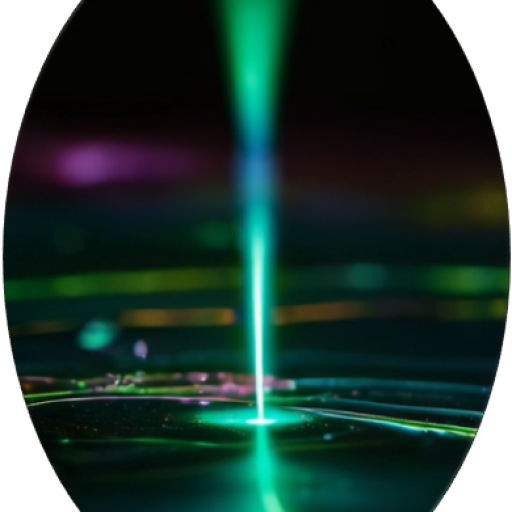Ion Beam Modification: Tailoring Material Properties
Focused Ion Beam (FIB) doping provides an unparalleled capability to tailor material properties with nanoscale precision. By introducing ion species such as Ga, Xe, Ar, Kr, O, N, Au or Si, materials can be site-selectively altered to achieve desired mechanical, magnetic, electronic or optical characteristics. For example, ion-based doping enhances mechanical properties for structural robustness, adjusts magnetic anisotropy for spintronic devices, or fine-tunes electric conductivity for nanoelectronics. The high precision of ion beams enables site-specific modifications at controlled depths and doses, ensuring minimal damage to surrounding areas. This is particularly important for applications requiring defect engineering, material strengthening, and localized functionalization in advanced devices.
Literature
Roadmap for Focused Ion Beam Technologies; K. Höflich et al.; Appl. Phys. Rev (2023), 10, 041311.
Directing Matter: Toward Atomic-Scale 3D Nanofabrication; S. Jesse et al.; ACS Nano (2016), 10, 6, 5600.
Charged Particle-Induced Surface Reactions of Organometallic Complexes as a Guide to Precursor Design for Electron- and Ion-Induced Deposition of Nanostructures; J.-C. Yu et al.; ACS Appl. Mater. Interfaces (2021), 13, 41, 48333.
Superconducting Materials and Devices Grown by Focused Ion and Electron Beam Induced Deposition; P. Orús et al.; Nanomaterials (2022), 12(8), 1367.
Nanofabrication Using Focused Ion and Electron Beams: Principles and Applications; I. Utke, S. Moshkalev S., P. Russell P.; Oxford: Oxford University Press (2012)
Nano Josephson Superconducting Tunnel Junctions in YBa2Cu3O7–δ Directly Patterned with a Focused Helium Ion Beam; S.A. Cybart, E.Y. Cho, T.J. Wong, B.H. Wehlin, M.K. Ma, C. Huynh, R.C. Dynes; Nature Nanotechnology (2015), 10, 598.
Electron Beam Modification: Non-Invasive Property Tuning
Electron beam-based modification provides a precise, minimally invasive method to enhance material properties while preserving nanoscale features. It is performed through two key approaches:
- E-Beam Curing in High-Vacuum Conditions: In high-vacuum environments, focused electron beams enable localized curing that enhances mechanical stability and electrical properties with exceptional lateral resolution. This approach ensures precise property tuning without introducing thermal or structural damage, making it ideal for applications requiring high-fidelity nanoscale control.
- E-Beam Purification Under Gas Atmospheres: When combined with reactive gases such as H₂O or O₂, electron beams facilitate the full removal of carbon-based impurities from FEBID and FIBID structures. This gas-assisted purification transforms carbon-rich deposits into nominally pure materials, either entirely or highly localized. The latter enables the creation of multi-functional structures with multi-purpose performances for applications like nanoscale photonics, and advanced sensors or superconducting circuits.
Together, these electron beam approaches offer a versatile solution for property tuning and material purification, delivering functional, high-performance nanostructures while preserving their integrity at the smallest scales.
Literature
A Review on Direct-Write Nanoprinting of Functional 3D Structures with Focused Electron Beams; V. Reisecker, R. Winkler, H. Plank; Adv. Funct. Mater. (2024), 34, 2407567.
Living up to its Potential – Direct-Write Nanofabrication with Focused Electron Beams; M. Huth, F. Porrati, S. Barth; J. Appl. Phys. (2021), 130, 170901.
Directing Matter: Toward Atomic-Scale 3D Nanofabrication; S. Jesse et al.; ACS Nano (2016), 10, 6, 5600.
Inert Gas Enhanced Laser-Assisted Purification of Platinum Electron-Beam-Induced Deposits; M.G. Stanford et al.; ACS Appl. Mater. Interfaces (2015), 7, 35, 19579.
Nanofabrication Using Focused Ion and Electron Beams: Principles and Applications; I. Utke, S. Moshkalev S., P. Russell P.; Oxford: Oxford University Press (2012)
